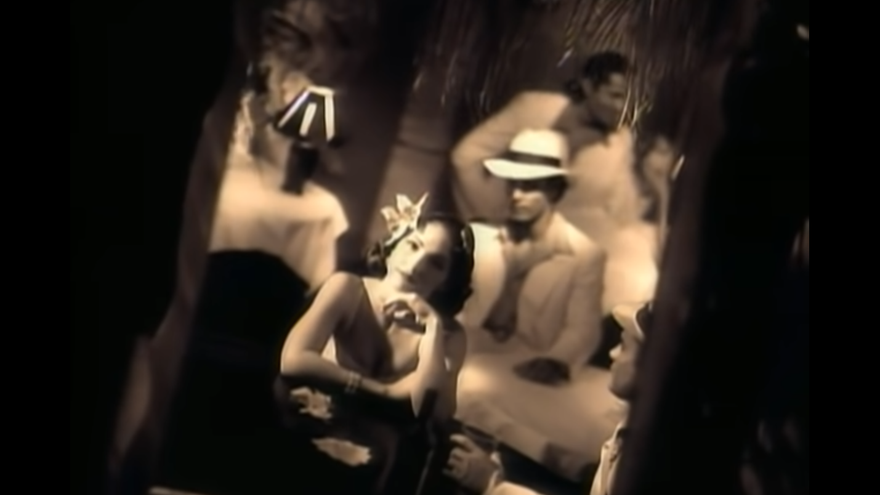
![]() EFE (via 14ymedio), Jorge I. Pérez, Miami, 11 June 2023 — Mi Tierra (“My Homeland”) remains the favorite album of Cuban American singer Gloria Estefan who, 30 years after its release, describes the record as “a cultural project” that she and her husband, producer Emilio Estefan, did for their children.
EFE (via 14ymedio), Jorge I. Pérez, Miami, 11 June 2023 — Mi Tierra (“My Homeland”) remains the favorite album of Cuban American singer Gloria Estefan who, 30 years after its release, describes the record as “a cultural project” that she and her husband, producer Emilio Estefan, did for their children.
“It was made to keep Cuba alive and for our children to know their roots,” says Estefan in an interview with EFE in Miami on the occasion of the 30th anniversary of an album that was not the first she recorded in Spanish, but was the first that she made in Spanish “after success in English.”
“It’s a project that plays variations of Cuban music, which is so rich. Culturally, it reflects Emilio and me. As artists, it has been the greatest contribution we have made to who we are. That mixture (of sounds) is very real within us,” says the singer, composer and actress.
With 12 songs written especially for the album, which was released on June 22, 1993 under Sony Music’s Epic Records label, Mi Tierra includes pieces in such Cuban genres as bolero, son montuno, chachachá, and danzón, and closes with a conga santiaguera [music for an ensemble dance from Santiago de Cuba in Oriente, Cuba’s easternmost province].
From 1993 to now, 19 million copies have been sold, she declares with pride.
“I grew up singing the Cuban ’standards’.” When we left Cuba, my mother was able to take only one suitcase with her. But my grandmother would send me mango compotes — which didn’t exist in this country — and inside the box she’d put records by Olga Guillot, by Celia Cruz, by Cachao. So as a child l sang all these songs that meant a lot to me,” Gloria says. continue reading
About the origin of Mi Tierra, Gloria says that when they were “at the height of success,” she and her husband began to dream of being able to show the world why they were mixing Afro-Cuban sounds with their music.
“We wanted to put out something new, compose new songs, but ones that would sound as if they’d been written in the 40s, during Cuba’s musical golden age, songs before Castro. So, we came up with that concept.”
According to the performer — who was born in Havana in 1957 and arrived in Miami at two years of age — “the project began to develop.”
“We talked about bringing in the greats of Cuban music. So, there’s Cachao (Cuban musician and composer Israel López, who died in 2008), Arturo Sandoval, Paquito D’Rivera–and Juanito Márquez, a composer who was the king of feeling,” she explains.*
“We were touring the world with music in English, and when we told the [record] company we wanted to do it, they thought we had gone crazy, because it was an American company. But we said, ’You know, you have to trust us,’” recalls the Miami Sound Machine vocalist.
Gloria Estefan, one of the most successful artists in the history of Latin music, explains that the album’s title song was written “with an idea of Emilio’s” that the Colombian composer Fabio Alonso Salgado, better known as Estéfano, ended up rounding out.
“Emilio told him he wanted to make a song about what one feels about the land one leaves behind. ’I want it to be a nostalgic song, so that any immigrant anywhere in the world can remember the smells, the flavors,’ he asked him, and the two of them sat down and composed the song.”
The singer recalls that with Miami Sound Machine she had already recorded a Spanish album, A Toda Máquina, which only had two songs “snuck in” that were in English: I Need A Man and Dr. Beat.
“I’ve sung in Spanish long before all the hits in English, so (with Mi Tierra) it was like going back to our initial idea and the songs we played here at quinces [girls’ 15th birthday celebrations], weddings, bautizos [christenings], but with new and original songs.”
“I loved every moment of the creation of that record,” she says.
Asked how she feels knowing that her music is still officially banned in Cuba, she replied: “This album was a love letter to our land and a hand that I extended to Cuba across these 90 miles. Cuba is still very important in our lives–we share something, which is heritage,” she remarked.
Next week Gloria Estefan will be inducted into the American Songwriters Hall of Fame. It’s “something that means a lot to me,” she says.**
Translator’s Notes:
* “Feeling,” a term which, in the context of musical styles, is often spelled phonetically in Spanish as filin, was a type of popular song in the Cuba of the 1940s.
** Gloria Estefan was inducted into the Songwriters Hall of Fame on June 19, 2023. She is the first Hispanic woman to be so honored.
Translated by: Alicia Barraqué Ellison
____________
COLLABORATE WITH OUR WORK: The 14ymedio team is committed to practicing serious journalism that reflects Cuba’s reality in all its depth. Thank you for joining us on this long journey. We invite you to continue supporting us by becoming a member of 14ymedio now. Together we can continue transforming journalism in Cuba.
